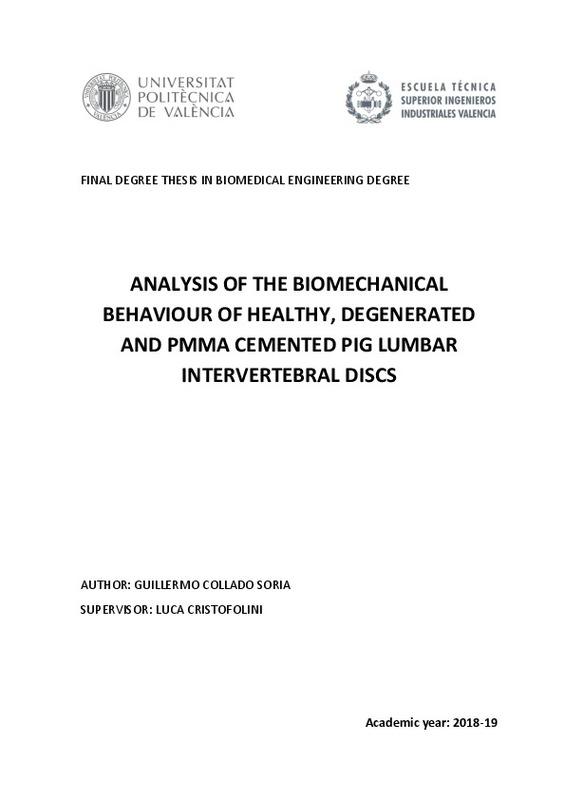JavaScript is disabled for your browser. Some features of this site may not work without it.
Buscar en RiuNet
Listar
Mi cuenta
Estadísticas
Ayuda RiuNet
Admin. UPV
Análisis del comportamiento biomecánico de un disco intervertebral sano, uno degenerado y uno cementado por PMMA
Mostrar el registro completo del ítem
Collado Soria, G. (2019). Análisis del comportamiento biomecánico de un disco intervertebral sano, uno degenerado y uno cementado por PMMA. http://hdl.handle.net/10251/145701
Por favor, use este identificador para citar o enlazar este ítem: http://hdl.handle.net/10251/145701
Ficheros en el ítem
Metadatos del ítem
| Título: | Análisis del comportamiento biomecánico de un disco intervertebral sano, uno degenerado y uno cementado por PMMA | |||
| Autor: | Collado Soria, Guillermo | |||
| Director(es): | Severi, Stefano Cristofolini, Luca | |||
| Entidad UPV: |
|
|||
| Fecha acto/lectura: |
|
|||
| Resumen: |
[EN] Lower Back Pain (LBP) is a common issue that affects especially to the elderly. One of its
principal causes is the intervertebral disc degeneration, having a strong influence in motion
and human ...[+]
[ES] La lumbalgia es un problema común que afecta especialmente a los más ancianos. Uno de sus principales factores es la degeneración del disco intervertebral, teniendo una fuerte influencia en el movimiento y en la postura ...[+]
|
|||
| Palabras clave: |
|
|||
| Derechos de uso: | Reconocimiento - No comercial - Sin obra derivada (by-nc-nd) | |||
| Editorial: |
|
|||
| Titulación: |
|
|||
| Tipo: |
|
recommendations
Este ítem aparece en la(s) siguiente(s) colección(ones)
-
ETSII - Trabajos académicos [10538]
Escuela Técnica Superior de Ingenieros Industriales







